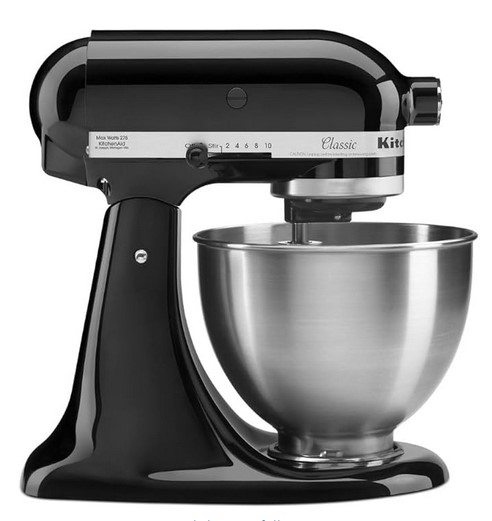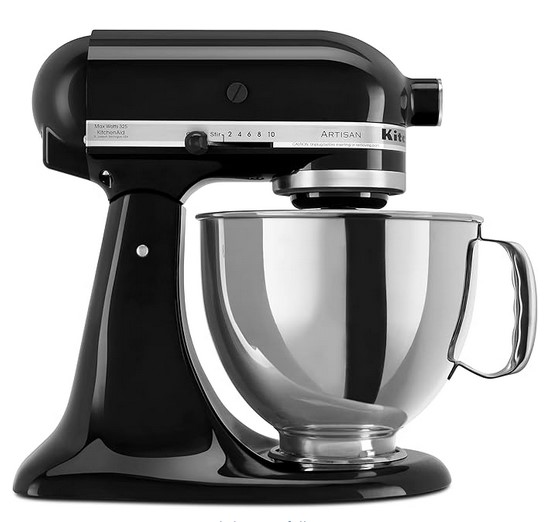4.5 vs 5 Quart Kitchenaid Mixer – Which Is Right for You?
KitchenAid mixers bring power, style, and convenience to home baking. Among the most talked-about options are the 4.5 quart and 5 quart models. At first glance, they seem nearly identical.
The bowl sizes are close, the designs look similar, and both come with sturdy motors. But a few small details make a big difference in daily use. Capacity, attachments, motor strength, and price all play a role in deciding which model fits your kitchen best.
One may be better for light baking and small batches, while the other offers more room for growth. Home cooks and baking lovers often find themselves torn between these two mixers.
This comparison breaks down the key differences, so you can make the smarter choice without second-guessing. Whether you’re whipping cream or kneading dough, the right mixer saves time and delivers better results. Let’s find out which one fits your baking style.
Kitchenaid 4.5 vs Kitchenaid 5 Quart Mixer
Both KitchenAid 4.5 Quart and 5 Quart stand mixers look very similar. They share many features like tilt-head design, strong motors, and stainless steel bowls.
But small details set them apart. One has a bit more power. The other costs a little less. Let’s look at both closely and find out which mixer works best for your needs.
KitchenAid Classic Series 4.5 Quart Mixer
This mixer has a 4.5-quart stainless steel bowl. It can mix up to 8 dozen cookies in one batch. The bowl is dishwasher safe. It has a tilt-head design, which helps you add ingredients easily.
The mixer locks in place while mixing. It comes with three tools: a coated flat beater, a coated dough hook, and a 6-wire whip. The mixer is made of metal and has 59 touchpoints inside the bowl for even mixing.
Features
-
4.5-quart stainless steel bowl
-
Tilt-head design for easy access
-
Strong metal build with 59-point mixing action
-
10 mixing speeds
-
Coated beater, dough hook, and 6-wire whip included
-
Works with over 10 optional attachments
What is the good?
This mixer is strong. It handles most kitchen tasks. The tilt-head design makes it simple to add ingredients. The 4.5-quart bowl fits most medium batches.
The flat beater and dough hook are coated, which helps cleaning. The metal body feels strong and durable. It mixes well with its 59-point action.
What is the bad?
It has a slightly smaller bowl than the 5-quart model. That may matter for large batches. It does not include a pouring shield. Mixing large dough may feel tight in the smaller bowl. Some heavy doughs might push the motor to work harder.
Overall Opinion
KitchenAid 4.5 Quart mixer is a solid option for home cooks. It works well for cookies, cakes, mashed potatoes, and pizza dough. The size fits most kitchens. The mixer gives value and strength, though it lacks a few extras.
KitchenAid Artisan Series 5 Quart Mixer
This mixer steps up with a 5-quart stainless steel bowl. It has a comfortable handle and can mix dough for 9 dozen cookies or 4 loaves of bread. The mixer uses a tilt-head design, just like the 4.5 model.
It also has 59-point planetary mixing action for full ingredient blending. The mixer body is made of zinc and stainless steel. It comes with a coated flat beater, coated dough hook, 6-wire whip, and a one-piece pouring shield.
Features
-
5-quart stainless steel bowl with handle
-
Strong zinc and stainless steel body
-
Tilt-head design
-
59-point mixing action
-
10 mixing speeds
-
Includes beater, dough hook, wire whip, and pouring shield
-
Compatible with 15+ attachments
What is the good?
The bowl is larger and has a handle, which helps with lifting. The extra size lets you mix more at once. The pouring shield reduces splatter. The coated tools are easy to clean. The mixer handles heavy dough well. The body feels strong and stable during use.
What is the bad?
It takes up more counter space. The price is usually higher than the 4.5-quart model. It may feel bulky for small kitchens. The motor power is similar to the 4.5 Quart, so performance is close for many tasks.
Overall Opinion
The KitchenAid 5 Quart mixer fits people who cook in larger batches. It offers better comfort with its bowl handle and pouring shield.
The size makes it good for families or people who bake often. It’s a little more expensive, but also gives more space and small upgrades.
Detailed Comparison for 4.5 vs 5 Quart Kitchenaid Mixer
Both mixers share the same tilt-head design. Both have strong metal builds and 10-speed settings. Each one includes a flat beater, dough hook, and wire whip. Both mixers offer 59-point mixing, which gives even results.
The main difference is the bowl. The 5 Quart bowl holds more and has a handle, making it easier to carry. It also comes with a pouring shield, which helps keep your kitchen clean.
The 4.5 Quart is more compact and costs less, but may feel tight with large recipes. Both mixers work with multiple attachments like pasta rollers, meat grinders, and more. So no matter which model you choose, both can do more than just mix.
The 5 Quart model feels more complete. The 4.5 Quart fits better for people with limited space or smaller baking needs.
FAQs
Can both mixers use the same attachments?
Yes. Both use the same power hub and support all standard KitchenAid attachments.
Is the 5 Quart bowl better for bread?
Yes. It can mix more dough and gives more space for kneading.
Does the 4.5 Quart model mix well?
Yes. It uses the same 59-point planetary mixing system for even blending.
Which mixer is lighter?
The 4.5 Quart mixer is a little lighter and easier to move.
Are both bowls dishwasher safe?
Yes. Both stainless steel bowls and coated beaters are safe for dishwashers.
Conclusion
Both KitchenAid stand mixers are strong, simple, and great for home use. The 4.5 Quart model works well for small to medium batches. It fits tight spaces and budgets. The 5 Quart mixer adds a bigger bowl, a handle, and a pouring shield.
That makes it better for larger recipes and easier cleanup. Pick the 4.5 Quart if you want a solid mixer for small jobs. Pick the 5 Quart if you bake often or need extra space in the bowl. Either way, you get a mixer built to last








